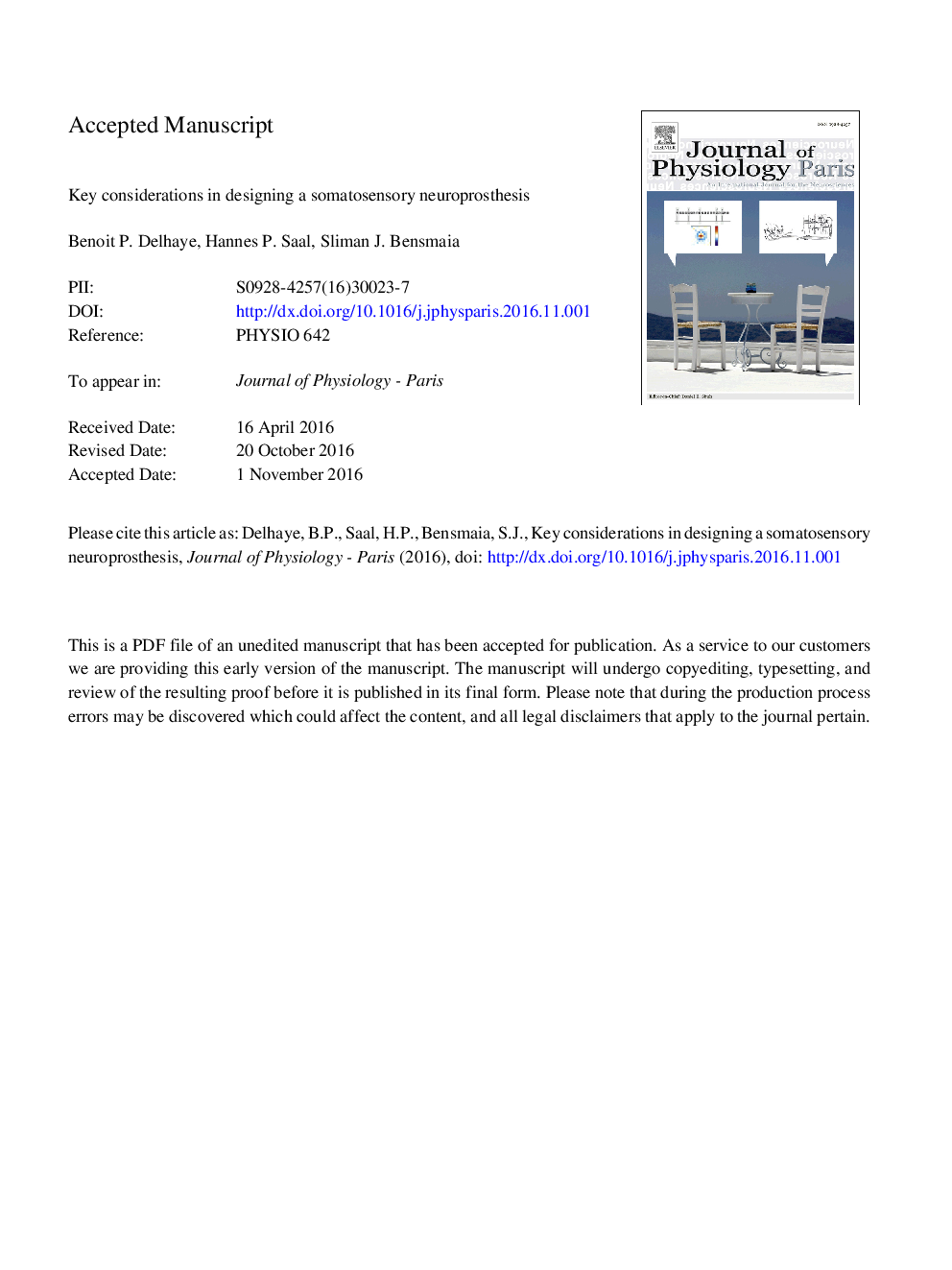| Article ID | Journal | Published Year | Pages | File Type |
|---|---|---|---|---|
| 5593257 | Journal of Physiology-Paris | 2016 | 18 Pages |
Abstract
In recent years, a consensus has emerged that somatosensory feedback needs to be provided for upper limb neuroprostheses to be useful. An increasingly promising approach to sensory restoration is to electrically stimulate neurons along the somatosensory neuraxis to convey information about the state of the prosthetic limb and about contact with objects. To date, efforts toward artificial sensory feedback have consisted mainly of demonstrating that some sensory information could be conveyed using a small number of stimulation patterns, generally delivered through single electrodes. However impressive these achievements are, results from different studies are hard to compare, as each research team implements different stimulation patterns and tests the elicited sensations differently. A critical question is whether different stimulation strategies will generalize from contrived laboratory settings to activities of daily living. Here, we lay out some key specifications that an artificial somatosensory channel should meet, discuss how different approaches should be evaluated, and caution about looming challenges that the field of sensory restoration will face.
Keywords
Related Topics
Life Sciences
Biochemistry, Genetics and Molecular Biology
Physiology
Authors
Benoit P. Delhaye, Hannes P. Saal, Sliman J. Bensmaia,
